 One of the founders of the Ethanol Promotion and Information Council and Team Ethanol is Ron Fagen, Fagen, Inc. Ron’s here (lower left) in the EPIC hospitality tent watching today’s race.
One of the founders of the Ethanol Promotion and Information Council and Team Ethanol is Ron Fagen, Fagen, Inc. Ron’s here (lower left) in the EPIC hospitality tent watching today’s race.
I spoke to Ron when we were in one of our caution periods and things kind of quieted down. He really likes how the relationship with the Indy Racing League has showcased the performance value of ethanol. You won’t find a bigger champion of the key benefits of this renewable fuel which includes being more environmentally friendly, relieving our dependence on foreign oil and helping out our economy.
Here’s my interview with Ron: [audio:http://www.zimmcomm.biz/epic/iowa-corn-07-fagen.mp3]


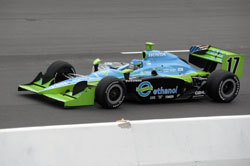 I’m saddened to say that Jeff Simmons in the Team Ethanol car wasn’t able to finish today’s race. And he was running very well. Unfortunately on lap 86 Tony Kanaan spun out in front of him and he had no where to go and wound up in the wall and was out of the race.
I’m saddened to say that Jeff Simmons in the Team Ethanol car wasn’t able to finish today’s race. And he was running very well. Unfortunately on lap 86 Tony Kanaan spun out in front of him and he had no where to go and wound up in the wall and was out of the race.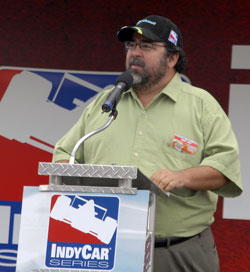 Just prior to the Iowa Corn Indy 250, presented by Ethanol I ran into Bob Dinneen, the CEO/President of the
Just prior to the Iowa Corn Indy 250, presented by Ethanol I ran into Bob Dinneen, the CEO/President of the 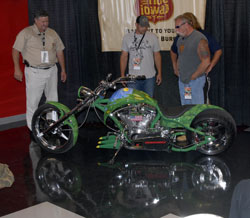 They’re billing it as America’s first renewable energy chopper that runs on E85. It was unveiled today at the Iowa Speedway by
They’re billing it as America’s first renewable energy chopper that runs on E85. It was unveiled today at the Iowa Speedway by 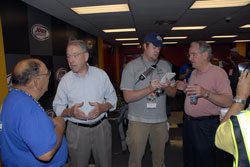 Welcome to race day here at the Iowa Speedway as we near the start of the Iowa Corn Indy 250.
Welcome to race day here at the Iowa Speedway as we near the start of the Iowa Corn Indy 250.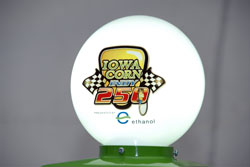 It has been a long day at the track here in Newton, IA for the lead up to the Iowa Corn Indy 250. I’ve updated my photo album and am calling it quits for the night since we’ve got to be back out at the track early.
It has been a long day at the track here in Newton, IA for the lead up to the Iowa Corn Indy 250. I’ve updated my photo album and am calling it quits for the night since we’ve got to be back out at the track early.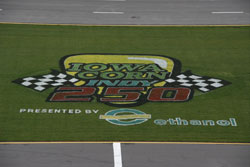 I think the logo for the Iowa Indy Corn 250, presented by Ethanol is very nice. It really looks good on the lawn in between the track and the pits here at Iowa Speedway.
I think the logo for the Iowa Indy Corn 250, presented by Ethanol is very nice. It really looks good on the lawn in between the track and the pits here at Iowa Speedway.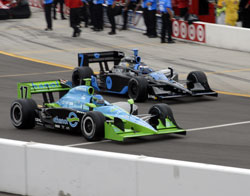 It’s practice time here at the Iowa Speedway for the IndyCars. Here’s Jeff Simmons leaving the pits for the first session which was delayed this morning due to some foggy weather problems.
It’s practice time here at the Iowa Speedway for the IndyCars. Here’s Jeff Simmons leaving the pits for the first session which was delayed this morning due to some foggy weather problems.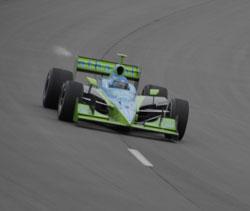 We’re hoping that those numbers improve here at the track tomorrow.
We’re hoping that those numbers improve here at the track tomorrow.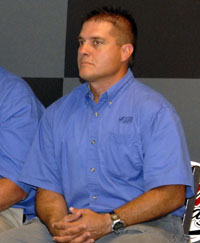 Tim Recker is an Iowa corn grower and the president-elect of the
Tim Recker is an Iowa corn grower and the president-elect of the 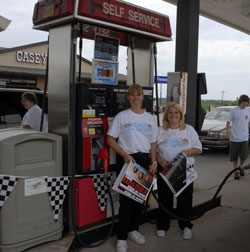 One of the ethanol pump promotions coordinated by the Ethanol Promotion and Information Council this week was held at
One of the ethanol pump promotions coordinated by the Ethanol Promotion and Information Council this week was held at